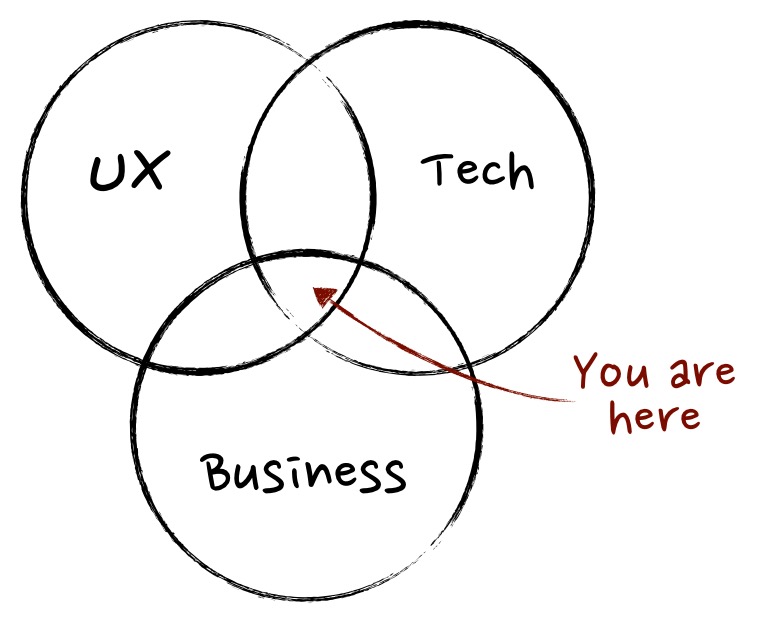Richa Verma, Product Management Intern, Sisu Data
Richa Verma (MIMS ’23) spent the summer of 2022 as a Product Management Intern at Sisu Data, a Forbes AI 50 startup.
Describe a typical day at your internship.
On a typical day, I would be digging into customer problems and feedback, participating in sprint meetings, formulating new features in product requirement documents (PRD), and working with designers and engineers to ship out features!

Most importantly, I took a head start, as I was worried whether I’d ship enough features. With my manager, we settled on a broad goal that I should ideally contribute to all aspects of product management—vision and strategy work, day-to-day product execution, doing user research and testing, and driving a go-to-market strategy for the new product features. To ensure that I actually learn all aspects, I tracked my week-to-week goals with my manager so that we had a bird's-eye view of whether I was hitting all my internship goals.
Pro Tip: Define the goals of your internship early with your manager, and see whether you are on track. No plan ever succeeds, unless revisited.
What was the most valuable thing you learned at your internship?
The internship gave me a great framework to execute as a PM well in any org. I learned that as a PM, you have to do four things constantly:
- Documentation is your weapon—writing a great product requirement document or an update document can help you drive alignment faster.
- Understand the customer—keep digging into your sales calls/support calls to be closer to your customer; it will inform your product decisions well.
- Get feedback on requirements regularly—you should always try to get more eyes on your PRD as well as keep reminding everyone of the “why” we are building something.
- Drive your meetings—be prepared for your meetings; have an agenda/list of questions so that you can take the meeting to a meaningful conclusion, and send the notes back.
What was the biggest challenge?
The biggest challenge for me was to understand a pretty technical product holistically, and define strategy and product investments for improving information architecture and overall usability in just three months, apart from executing on the current product roadmap.
How did your work at the I School prepare you for this role?
Prior to MIMS, I spent over 5+ years building, scaling, and delivering tech products to help organizations leverage data-driven decision-making. I wanted to be at the forefront of data innovation; however, I didn't have any formal tech training, so I decided to join the MIMS program at UC Berkeley. It was the perfect program to hone my technical, data science, UX, and product skills—all at once—so that I can build amazing tech products holistically.
The I School enabled me to deal with a lot of different aspects of the product from fixing some usability issues (Thank you Laith Ulaby for that Interaction Design and Neyat Daniel for the Applied Behavioral Econ class!) to actually thinking through information architecture by leveraging concepts from Information Organization and Retrieval, as well as Information Visualization for improving data visualization in the application. And, of course, Jen Dante’s Lean-Agile Product Management comes in very handy as I think through different aspects of my everyday product management work.
Pro Tip: Take courses across the spectrum not just PM—UX, data science, front-end/back-end. This helps to empathize with functions you will collaborate with.
Any advice for first-year MIMS students as they prepare for their internships?
Finding a PM internship, especially for a specific industry, can be difficult. Try every method—outreach, online applications, as well as LinkedIn networking. If you want to work with startups, try reaching out to founders/heads of product, and chat about the problem they are solving. These conversations can land you opportunities that are not advertised. Sisu wasn’t hiring a PM intern, but one such conversation convinced my manager, Gaurav, to create a position.
Aside from the pro tips I’ve already shared, I would advise the following to land the right internship:
- Start applying early, and start reaching out to people on LinkedIn. Create a list of companies, and knock that off as you start applying.
- Find a good partner to participate in mock interviews and do interview prep with. I found a good partner in fellow MIMS student Anshita Arya and my partner (already a PM!) Tanay.
- Keep yourself accountable and apply to 5-7 companies daily. Iterate on resume, highlighting relevant experience, making LinkedIn connections, etc.
- Rebecca, Eva, and the Career Services team are awesome in resume reviews, as well as helping with settling on an internship; go to the Career Services office hours!
- Network with people who come for guest lectures, follow industry veterans, go on coffee chats, as well as to meetups—you live 20 mins away from San Francisco; make the most of it!
Did your internship influence your career plans after graduation?
100%! Since in my previous roles—I was mostly a generalist—the internship made me realize two things: (1) I love working on problems at the intersection of data and UX, and (2) I had mostly been a generalist before, but product management is where I shine.









